Victoria may be blessed with the likes of southern bluefin tuna, mako and thresher sharks, snapper, King George whiting, silver trevally, kingfish, Australian salmon and a host of others, but the humble flathead takes first place on the plate.
Now when I talk about flathead, I’m talking about your typical run of the mill models. You know those pesky critters that terrorise your baits in Port Phillip Bay, Western Port, Bass Strait and throughout the estuaries along the coastline. Of all the flathead species in Victoria, tiger and southern blue spot are the two most common.
Tiger flathead aren’t commonly caught in Western Port or Port Phillip Bay but are commonly caught in Bass Strait, while the southern bluespot flathead (yank) is most likely the one you’ll catch in WP and PPB and localised estuaries. In saying that, there are also a few others which tend to be caught from time to time and these are the rock and sand flathead as well as duskies, which tend to be confined to the east Gippsland estuaries.
Rock flathead are more of a rare catch these days and are typically recognised by the very dark colouration on their backs or topside. Rock flathead tend to be caught in Western Port in areas where reef is prevalent and in thick weed areas – where you’d target whiting.
Yanks are a little lighter in colour and tend to be found in sandier locations such as the channel banks in Tortious Head, the edge of the Middle Spit. If you’re fishing in PPB, the channel edges on the outskirts of Mud Island. In estuaries such as Port Welshpool, McLoughlins Beach and Port Albert, it’s common to catch some big yanks from time to time. Better yet, they are a lure angler’s dream fish in these parts.
Lastly, is the humble sand flathead and although they can also be caught in Bass Strait, they are the more common flathead species to be caught. They’re not typically large in size and the majority are caught right throughout Port Phillip at an average size of 35cm. You’ll catch the odd larger one, but you’ll be doing a lot of measuring with this species.
There is no doubting that flathead are the garbage guts of the ocean. If it doesn’t fit in their mouth, they’ll still try to eat it. Having a variety of species of flathead on offer, techniques can differ depending on the species and where you’re fishing for it. For instance, when fishing for sand, rock, yank and tiger flathead, the preferred method is bait fishing. For duskies, flicking lures about the estuaries is a better option.
When is comes to bait fishing for flathead, there are three main techniques which are deadly effective – the first is drift fishing. Drift fishing for flathead is one of the more common methods and is the most productive. It allows anglers to cover ground to find where the fish are holding in good numbers.
Drift fishing methods tend to be used in more open water areas, such as Bass Strait and in Port Phillip Bay where anglers can set a path to drift and leave it to the current and wind to push them along. Once an area has been found, deploy your baits and let the boat do the work for you.
One thing to note with drift fishing is that you might find the boat is being pushed along too fast. In this case, you’ll want to use a heavier sinker and let line out to ensure the bait is on the bottom. If the drift is too fast, invest in a sea anchor or drogue, as this will slow down the drift speed and make fishing the bottom easier.
In Western Port, drift fishing can prove difficult. You could easily hit ground on the shallow banks or worse, hit one of the channel markers. The preferred method in this waterway is to anchor and set a berley trail using a berley bucket. Once the berley bucket is deployed, cast baits into the trail. You’ll find the fish hanging around after a short time.
When it comes to setting up to target flathead, nothing could be simpler. Other species might be leader shy or put off by wire – flathead are the total opposite. I guess that comes with being a greedy guts. Any rig, leader and hook size will do, but it still pays to specialise in the right tackle.
Regardless of whether you drift fish or you’re under anchor while fishing for flathead, a paternoster rig is the best option. Paternoster rigs can be purchased pre-made and it’s simple to do for those anglers that enjoy making their own. To make a paternoster rig, use a length of 20-30lb leader. In it, tie two droppers at equal intervals followed by a large loop at the bottom for the sinker. A good sturdy rolling swivel, like a size 1, will prevent any line twist while drifting and when winding fish up.
Hooks can differ greatly. A circle hook will be a huge benefit in all situations. Remember, flathead have very big mouths, so small hooks can prevent a good hook set. A Mustad Demon Light Circle 3/0 will get the perfect hook set every time, regardless of the size of fish.
Even while under anchor and casting baits back into a berley trail, this rig is ideal. When the fish takes the bait, the hook will slide to the corner of the mouth and penetrate every time.
There are two common traits for all flathead and those are the areas where they’ll be found. Flathead are a predator and a master of disguise. Being light in colour, they will submerge themselves in soft sand waiting for the perfect opportunity to devour an unsuspecting prey.
When searching for likely flathead grounds, work areas that are large sand bars or banks. Out in Bass Strait, try to find a sandy location with a fairly steep decline, such as the Flinders Bank. Further out in Bass Strait, they seem to congregate in depths of 40-50m. It’s not always that easy to find them. Some days you’ll just drop right onto a good patch and other days,you’ll have to drift, re-drift and then drift again before you get a good patch.
In Western Port, the Middle Spit is one of the most reliable locations to catch a good feed of frogs. You must anchor and berley. In saying that, if you’re after some rockies, the reefy bottom around Reef Island near Rhyll is a haven for them. Once again, anchor and berley around there to attract them.
Port Phillip Bay is vastly different. Ask any angler that fishes the bay regularly and they’ll tell you that the only flathead in the bay are all undersize. In fact, some parts of the year have very big models about. You just need to know where to look.
March is a great time to be on the lookout for big flathead, especially in the shallows and on foot around the bay. Locations such as Altona and south of the pier are top locations to be walking the beach casting soft plastics into the drains. Beaumaris and the rocky point to the south of the ramp are where large flathead tend to school up after December. This area is shallow and good for drift fishing, especially around the mussel farm.
Most of the larger flathead come from the southern end of the bay. Throughout the warmer months, they tend to come out of the deep and sunbake in the shallows and on the edges of shallow banks. Areas such as Capel Sound, around the banks of the Great Sands and amongst the boat moorings from Rye to Portsea are all productive grounds. The only thing to remember is berley. Berley is the key.
When it comes to bait choice for flathead, just about anything will do. When you find them in higher numbers, putting a bait on at every drop becomes a mundane task. Soft fleshier baits such as pilchard, blue bait and white bait come off the hook easily and you’ll be replacing baits with every drop.
Firmer baits such as cuttlefish or calamari are by far the best choice. Thread a piece of calamari onto a circle hook. If you double it over and pass over the bard a second time, the challenge will be to count just how many fish you can catch using the one piece of bait.
When you’re choosing to head out for a good old flatty bash, keep everything simple. Set a drift line, rig up a paternoster rig, bait with some fresh calamari and you’ll be right on your way.
BEER BATTERED FLATHEAD
Ingredients
1cup of all-purpose flour
1tsp baking powder
1tsp salt
1 1/4 cups light beer
Oil
Extra flour for dredging
* This will make enough batter for about 4-6 pieces of fish.
Method
• Combine the flour, baking powder and salt in a mixing bowl.
• Pour in the cold beer.
• Whisk until smooth. Your beer batter is ready!
• Drench the fish in the flour and shake off the excess.
• Dip the fish into the beer batter to thoroughly coat and let some of the excess drip off.
• Make sure the oil is heated to 375ºF. Fish cooks quickly and you want the batter to be beautifully golden.
• Carefully drop the fish into the oil.
• Fry the fish for 5-8 minutes or until nicely golden. Then remove the fish with a slotted spoon and let some of the excess oil drip off.
Reads: 3883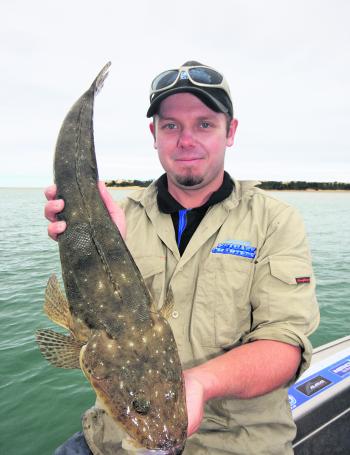
Gippsland maybe known for its lure-eating duskies, but there are some mighty big yanks about too.
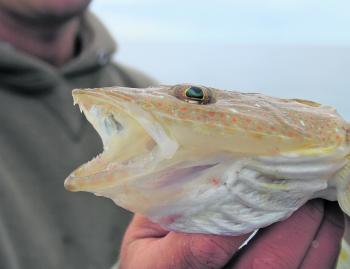
Some anglers don’t mind grabbing flathead and putting their thumb in their mouth, but not with tiger flathead.
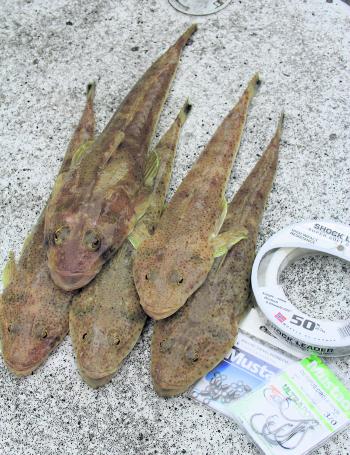
Regardless of the flathead you target, it always pays to use the right tackle for the job.
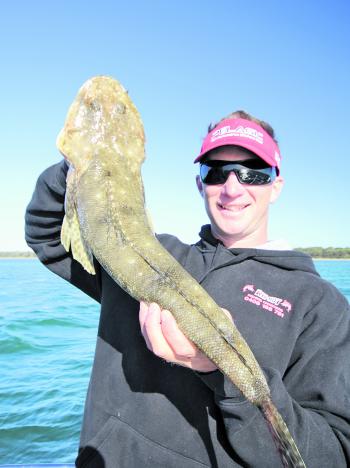
The Middle Spit in Western Port is a big producer of nice flathead. Simon Rinaldi from Red Hot Fishing Charters displays a cracker model taken while berleying the edge of the drop-off.

A twin dropper paternoster rig is the best setup for flathead.
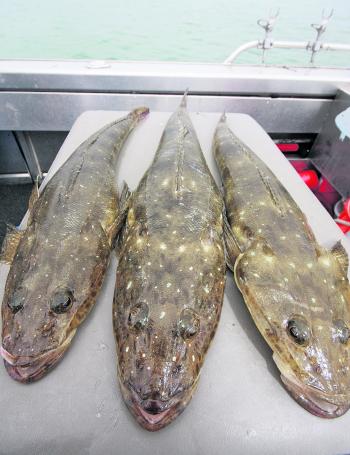
Can’t complain with a threesome of big yanks.
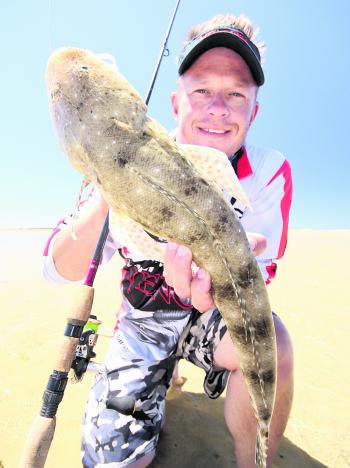
Walking the flats licking soft plastics can lead to some impressive flathead being caught in the summer months.
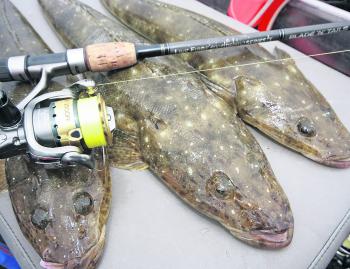
Flicking lures is also effective for all species of flathead.
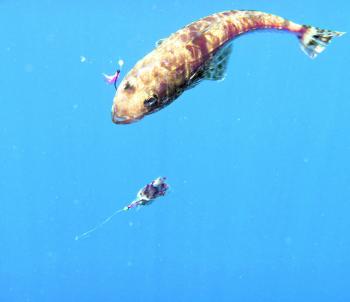
One of the key benefits of flathead is that they not only take baits, but lures as well.

Offshore you can catch both tiger and sand flathead in various depths.

These happy tigers even smile when they are caught.

There is not doubt that a twin dropper paternoster rig is the best setup for flathead.

Circle hooks laced with a little strip of calamari can’t be passed up.
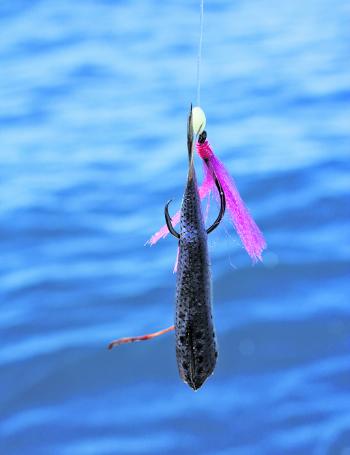
If you are going to use a pilchard, cut it in half and rig it on a serious circle hook.
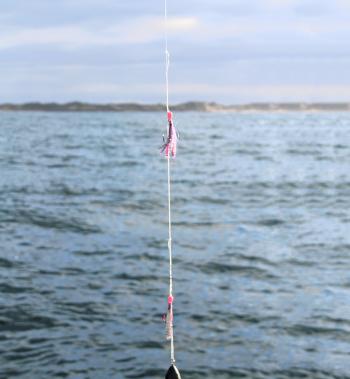
A twin drop pre-tied Mustad paternoster rig ready for deployment.

The author with a pair of nice flathead destined for the table.




